THE INNER LANDSCAPES OF CAROLINE BACHMANN
11.05.2025 ART & CULTURE
Like Ancient Greek philosopher Heraclitus, who famously pointed out that you can never step into the same river twice, Swiss artist Bachmann is alert to the impossibility of fixing a scene, a person, a moment, in a world that is constantly changing. “I don’t paint one landscape”, she tells Le Sirenuse Journal. “It’s always between one landscape and another, it’s always in flux”.
Bachmann is talking in the Don’t Worry Bar, relaunched in the summer of 2024 as a listening bar in which lovingly reproduced vinyl records form the soundtrack to stimulating conversation and cocktails. She is seated on a pale yellow armchair with her back to a panorama she has spent months reflecting on. The results of these reflections are up there, housed in twenty niches between the arched supports of the traditional cross-vaulted ceiling.
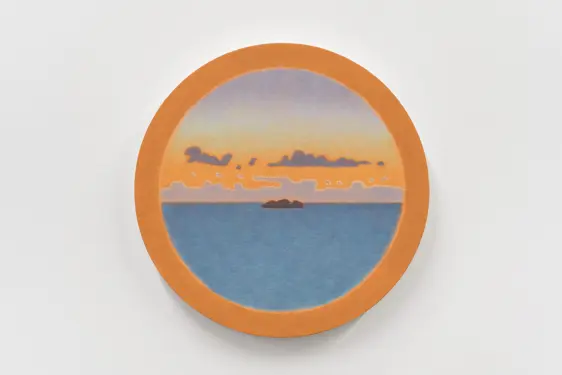
View
Before it became Le Sirenuse’s original bar, this was one of the original living rooms of the Sersale villa in Positano, which the family transformed into a hotel in 1951. Bachmann’s twenty-part 2025 work Le Sirenuse I–XX can be seen as a modern-day continuation of the sort of landscape study that would have graced many an Italian summer villa – a genre well represented among the 17th, 18th and 19th century paintings collected by the late Franco Sersale that today hang in the rooms and public spaces of Le Sirenuse.
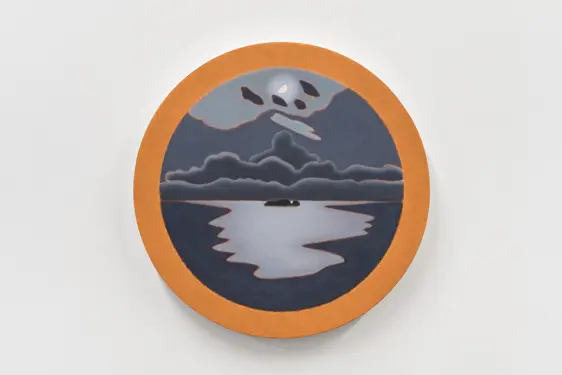
View
The ninth addition to the Artists at Le Sirenuse site-specific art programme founded by Antonio and Carla Sersale and curated by Silka Rittson-Thomas, Bachmann’s work consists of twenty circular paintings or ‘tondos’, each one measuring 30 centimetres in diameter. Each one depicts the ‘same’ view of the Li Galli islands, centrally placed and framed by a painted border in the amber earth pigment known as burnt sienna. But the view is shown to be never the same, as light, wind, waves and weather shift, combine and evolve.
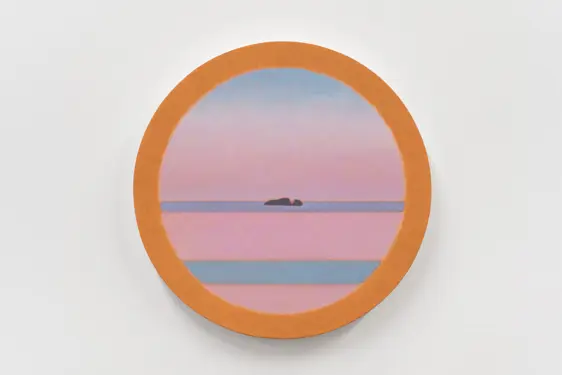
View
The tondos chart twenty sequential studies of the seascape over the course of one day and night, and are to be viewed, Bachmann suggests, “like an infinitely rotating clock”. But the artist warns against seeing this revolving night-to-day-to-night series as if they were snapshots of the scene as captured at twenty precise moments. “With painting”, she explains, “you can change time completely. It’s not a photograph. It takes months to make a painting, so all this time enters into the painting, all these moments stick one on top of the other, and in the end you have something that contains all these dilated times which derive from the act of painting”.
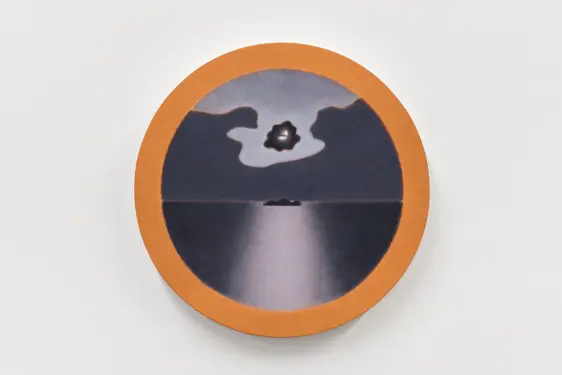
View
The artist lives in the village of Cully on the shores of Lake Geneva. It’s the lake that is her constant, recurring subject. Painted at all hours of the day and night (“I live much more in the night than in the day”, she remarks), the lake-scapes Bachmann paints here, she says, “form an infinite cycle because it will never end, or it will end only when I do”.
Invited to Positano in October 2023, Bachmann was fascinated by a vista that felt like a Mediterranean companion to her familiar Swiss lake view. But what came first, before even the subject or format of the proposed work, was its location.
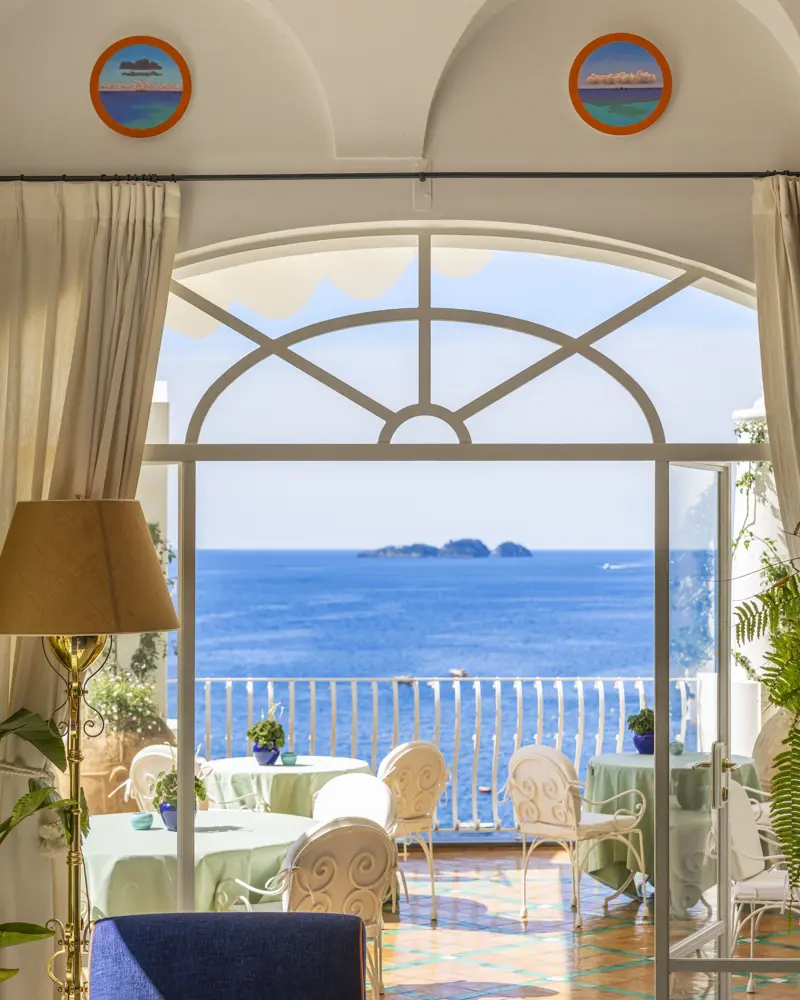
When the artist and her gallerists Gregor Staiger and Marie Lusa stepped into Le Sirenuse’s Don’t Worry Bar, she looked up and saw those twenty arched niches running continuously around the walls. “The magical thing about them”, Bachmann discloses, “ is that they continue around the ceiling with no interruption. I’ve done serial works before that were designed to be hung around a space and there’s almost always a door in the way, or a window, but not here”. As soon as she saw the space, Bachmann knew that the niches would be the perfect home for a landscape cycle that began with midnight in the centre of the north wall and continued clockwise, over the course of a day, returning to midnight. But it was only when she returned to her studio in Cully that the artist decided on the tondo format, and realised that the Li Galli islands provided the ideal focal point.
It took Bachmann nine months to complete the twenty oil paintings. The artist referenced a series of preparatory drawings made in Positano, she explains, “as a musician does a musical score… I don’t turn to the sketches to remind me of something but to recognise a density, an emotion, a force”. Bachmann adds that, for her, painting an island “is like painting a self-portrait, not only because the artist’s profession is a kind of island, but also because an identification takes place in the act of painting an island that allows you to bring it inside yourself and see it as a subject that is completely internal”.
Bachman’s initial sketches, drawn in pencil on A4 paper, serve like a writer’s notes, she explains: “when I was at Le Sirenuse I was constantly looking outside, and when I saw something interesting, I sketched it… it could be an effect of wind shaping the waves, how the clouds are placed in relation to each other, the degree of visibility, if it is very clear, if it is not clear, the type of light, or the emotion of the moment”. These preparatory drawings are monochrome, but the artist notes down on the paper any colour effects she deems relevant.
Although she uses these sketches only as prompts when painting the finished tondos in oil, Bachmann always tries to respect what she refers to as the “moment of grace in which the hand understands, and captures something you see and feel”. The artist goes on to elaborate: “The hand knows everything, so I try to trust it. If I draw a cloud the way a child might draw it, that childlike cloud will end up in the painting. If you fail to take advantage of that, you fall back on what you know, and what we know is always the same, it’s very boring”.
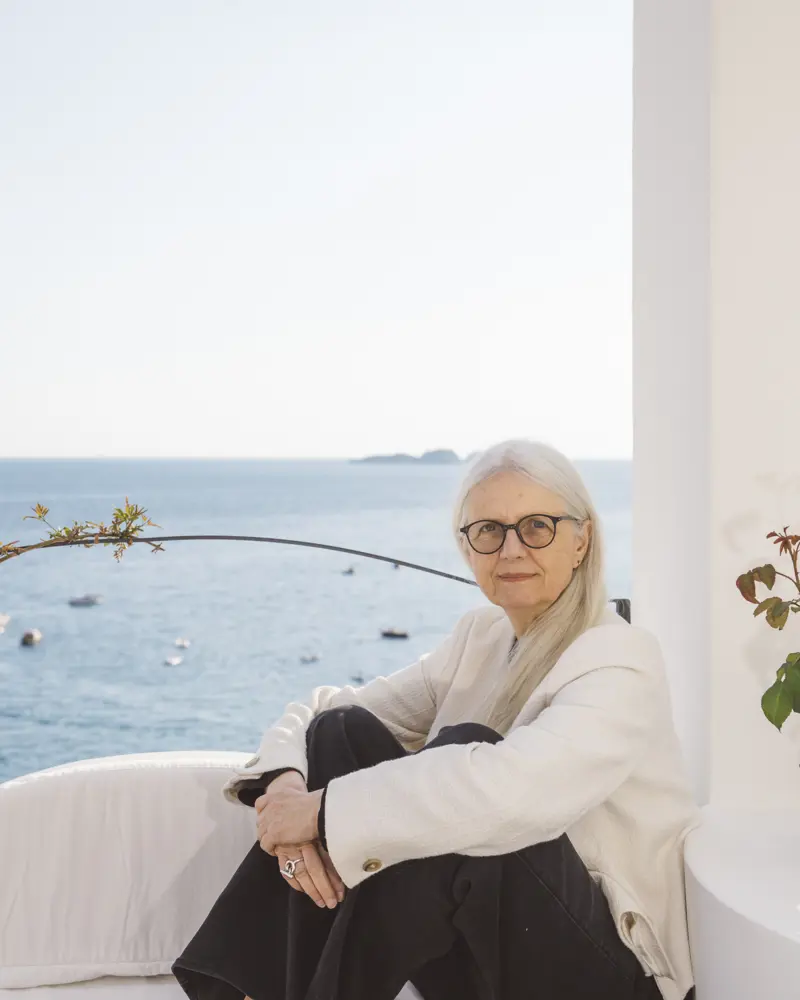
Historically, most painted landscapes are horizontal in format, but Bachmann likes to experiment with verticality. “Most of my landcapes are vertical”, she tells the Journal. “For me, landscape has more to do with the body, with the standing body, and bodily sensations, than with landscape per se. So landscape is not ‘landscape’, it’s something inside us, it’s like a portrait, or at the very least the terrain that a body can move through. Verticality – and in this I include the tondo format – allows one to enter into a landscape. If it’s horizontal, it doesn’t invite you in so much. This is also why I like to paint standing up. I have to stand and move until I'm in the right dimension with respect to what I have in front of me”.
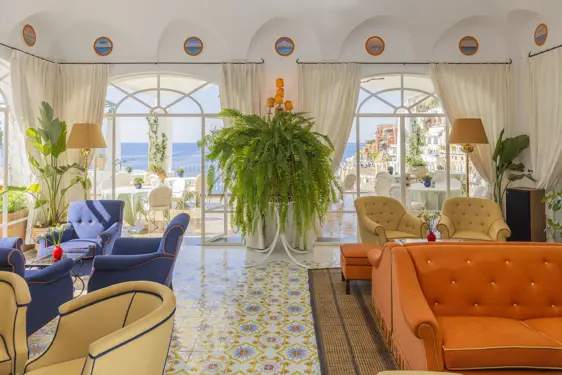
View
Asked whether she worries about the visual distraction of Martin Creed’s neon work Don’t Worry, which hangs in the centre of the ceiling her landscape tondos encircle, Bachmann laughs. “It’s not a competition!”, she exclaims. “I only hope that in the future, some other artist has the courage to add to the mix”.
Photos of single works © Brechenmacher & Baumann
Other photos © Roberto Salomone
Le Sirenuse Newsletter
Stay up to date
Sign up to our newsletter for regular updates on Amalfi Coast stories, events, recipes and glorious sunsets



